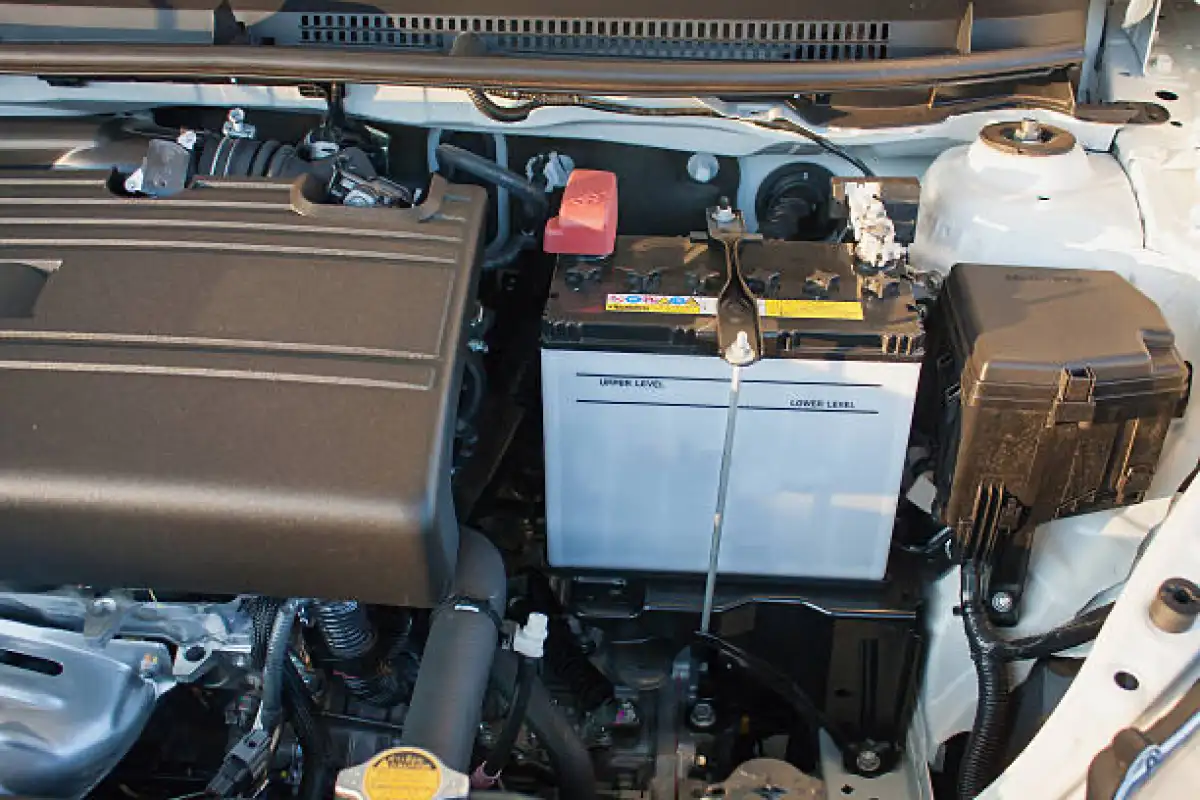Driving your Toyota Rush should be worry-free, especially when it comes to knowing the right battery specifications. Have you ever wondered about your toyota rush battery size and the best way to maintain it? This guide offers clear, step-by-step advice to help you choose the perfect battery, understand the replacement process, and master maintenance tips that guarantee performance even under extreme conditions.
How to Choose the Right Battery for Your 2025 Toyota Rush

When selecting the appropriate battery for your Toyota Rush, the first step is to verify your current battery specifications. You can find vital information in your owner's manual, including:
Battery group size (for instance, 46B24L)
A cold cranking amps (CCA) rating of 650 or more for dependable cold starts
Reserve Capacity (RC) with a minimum of 90 minutes
Following these checks, refer to our battery replacement guide 2025 for a deeper understanding of which battery types match your vehicle’s needs. You need to know that using the correct toyota rush battery size will not only boost performance but can also extend your battery's overall life.
Climate-Adapted Battery Selection
In regions with varying climatic conditions, choosing a battery adapted to your weather is crucial. Use the table below to understand the recommended battery features based on your local environment:
Climate Type | Recommended Features |
|---|---|
High-temperature areas | Heat-resistant AGM batteries |
Humid regions | Corrosion-resistant terminals |
This tailored guide ensures that no matter where you drive, you'll pick a battery that stands up to your local challenges. The instructions here cover everything from battery compatibility to installation practices suitable for 2025 models.
Top 3 Compatible Battery Brands
To help simplify your choice, consider these three well-regarded brands:
Panasonic OEM Replacement – Ensures exact factory specifications for a perfect fit
Bosch S5 Battery – Offers robust performance with an 800 CCA and a 100-minute reserve capacity
Varta Blue Dynamic – Features a spill-proof design for enhanced safety
Battery Life Expectancy & Maintenance

Knowing the typical lifespan of your vehicle’s battery is key. Under normal circumstances, you can expect the battery to last between 3 to 5 years; however, if you frequently drive short distances, you might need a replacement around every 2.5 years. Keep an eye out for common warning signs such as slow engine cranking or dimming lights, which signal that your battery is wearing out.
Monthly Maintenance Checklist
Ensure your battery remains in prime condition by following this easy checklist each month:
[] Remove any terminal corrosion with a cloth and a proper cleaner
[] Test the voltage, aiming for an ideal range between 12.4V and 12.7V
[] Make sure the battery is securely mounted
[] Inspect for any noticeable swelling of the battery case
These maintenance tips are practical and designed to help you avoid unexpected battery failures.
OEM vs Aftermarket Batteries:2025 Comparison

Comparing factory-installed (OEM) batteries against aftermarket options can help once you understand the key differences:
Factory Battery Advantages
Guaranteed perfect fitment that matches your vehicle’s design
Comes with a 24-month warranty for peace of mind
Built-in integrated power management ensures optimal system performance
Third-Party (Aftermarket) Options
Often more affordable with potential cost savings of up to 35%
Some models offer higher CCA ratings, ideal for extreme conditions
It is important to verify compatibility to ensure the battery fits your Toyota Rush perfectly
Understanding these points means you can confidently choose a battery that meets your specific needs.
Battery Upgrade Options for Tech-Savvy Owners

If you love technology and wish to upgrade, there are advanced battery options available:
Smart Battery Monitoring
Use Bluetooth voltage trackers like the Noco Genius for real-time monitoring
Benefit from built-in charge indicators which provide updates on your battery’s health
Automatic load detection can optimize battery performance
Innovative Battery Technologies
Consider lithium-ion conversions for a reduction in battery weight by as much as 18%
Solar maintenance chargers are a sustainable option for battery upkeep
Dual-battery setups cater to vehicles with high accessory demands
Pro Tip: After installing a new battery, always reset your vehicle’s battery management system via the OBD-II port to recalibrate the charging sequence.
FAQ

Q1:What is the correct toyota rush battery size for a 2025 model?
A:The ideal battery size for your Toyota Rush should be specified in your vehicle's owner's manual, typically listed as a group size like 46B24L. You should verify the recommended cold cranking amps (around 650 CCA) and ensure the reserve capacity meets your driving conditions. This guide is designed to help you identify and confirm these specifications. If in doubt, consult a certified professional, as ensuring the right battery size can impact overall vehicle performance.
Q2:How can I tell if my Toyota Rush battery needs replacement?
A:Common signs include slow engine cranking, dimming headlights, and a reduced reserve capacity. Regular voltage checks (aiming for 12.4V to 12.7V) are a reliable way to monitor battery health. Short-trip drivers may experience faster battery degradation, requiring replacement as early as every 2.5 years. Maintaining a monthly lifecycle checklist helps catch these issues early on so you can avoid inconvenient breakdowns.
Q3:What are the main differences between OEM and aftermarket batteries for the Toyota Rush?
A:OEM batteries are designed specifically for your vehicle, ensuring perfect fitment and reliability, with warranties often around 24 months. In contrast, aftermarket batteries can offer cost savings of up to 35% and sometimes provide higher CCA options. However, choosing an aftermarket battery requires careful compatibility verification to avoid potential performance issues. This guide clarifies these differences to help you make an informed decision based on your driving needs and budget.
This article is for reference only; please abide by your local laws and the latest regulations in your region.
Read More:
How to Buy Cars from Emirates Auction in 2025:Complete Guide

Mustafa Karim, having been deeply involved in automotive research and development for over ten years. He is fond of Japanese cars, and their precise and energy-efficient features have influenced him. In his spare time, he loves Japanese anime and kendo, drawing inspiration from them for control system research and development. He also often shares cutting-edge automotive knowledge on platforms, contributing to industry innovation and adding strength to automotive development with his expertise.













